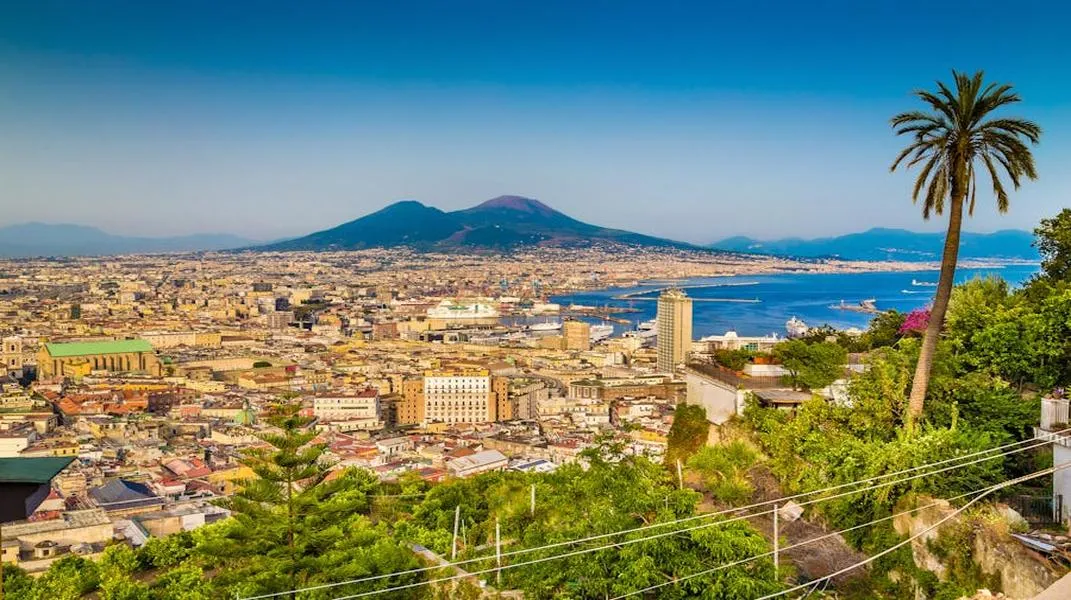Discovering Naples: The Gem of Southern Italy
Nestled along the stunning coastline of the Tyrrhenian Sea, Naples is a vibrant city that boasts a rich tapestry of history, culture, and culinary delights. As one of the oldest continuously inhabited cities in the world, Naples offers visitors an array of attractions, from its ancient ruins and stunning architecture to its bustling streets and mouthwatering cuisine. This article will delve into the many facets of Naples and provide a comprehensive guide for preparing for your visit.

A Brief Overview of Naples
Founded by the Greeks in the 8th century BC, Naples has been shaped by various civilizations, including the Romans, Byzantines, Normans, and Spanish. Its historical significance is reflected in its architecture and cultural sites. The city is a UNESCO World Heritage site, recognized for its historical center, which is one of the largest in Europe. Naples is not just a gateway to the Amalfi Coast or Pompeii; it is a destination in its own right, offering visitors a unique blend of history, art, and gastronomy.
Key Attractions in Naples
1. Historic Center of Naples
The historic center of Naples is a labyrinth of narrow streets, ancient churches, and bustling piazzas. A stroll through this area allows visitors to experience the city’s vibrant atmosphere. Key highlights include:
- Spaccanapoli: This famous street cuts through the heart of the historic center and is lined with shops, cafes, and historic buildings. It’s a great place to experience local life and culture.
- Naples Cathedral (Duomo di San Gennaro): This stunning cathedral is dedicated to the city's patron saint, San Gennaro. It features beautiful artwork and hosts the famous Miracle of San Gennaro, where the blood of the saint is said to liquefy during a special ceremony.
- Santa Chiara: An impressive Gothic church, Santa Chiara is known for its beautiful cloister adorned with colorful majolica tiles. The complex also includes an archaeological museum.
2. Archaeological Museum of Naples
One of the most important archaeological museums in the world, the National Archaeological Museum of Naples houses an extensive collection of artifacts from Pompeii and Herculaneum. Visitors can admire statues, frescoes, and everyday items that provide insight into Roman life. Highlights include:
- The Farnese Collection: A remarkable collection of classical sculptures and artifacts, including the famous Farnese Bull and the Farnese Hercules.
- Pompeii Artifacts: The museum features a variety of items recovered from Pompeii, such as mosaics, frescoes, and even casts of victims of the eruption of Mount Vesuvius.
3. Castel dell’Ovo
Perched on the tiny island of Megaride, Castel dell’Ovo is the oldest standing fortification in Naples. The castle offers stunning views of the Bay of Naples and the surrounding area. Inside, visitors can explore the various rooms and learn about the castle’s history, which dates back to the Roman period.
4. Vesuvius and Pompeii
No visit to Naples would be complete without a trip to Mount Vesuvius and the iconic ruins of Pompeii. Mount Vesuvius is an active volcano that famously erupted in 79 AD, burying the Roman cities of Pompeii and Herculaneum under volcanic ash.
- Pompeii: Explore the remarkably preserved ruins of this ancient city, including the Forum, the amphitheater, and the famous Villa of the Mysteries. Guided tours are available for those who wish to delve deeper into the history and significance of the site.
- Mount Vesuvius: Hike to the summit of the volcano for breathtaking views of the Bay of Naples and the surrounding landscape. There are well-marked trails, and it’s advisable to wear comfortable shoes.
5. Capodimonte Museum and Park
The Capodimonte Museum is housed in a former royal palace and features an impressive collection of Renaissance and Baroque art, including works by Caravaggio, Titian, and Raphael. The surrounding park offers a peaceful escape from the bustling city, with beautiful gardens and panoramic views.
6. Naples’ Culinary Delights
Naples is widely regarded as the birthplace of pizza, making it a must-visit destination for food lovers. When in Naples, be sure to indulge in:
- Neapolitan Pizza: Sample the authentic Margherita pizza, made with simple yet high-quality ingredients: San Marzano tomatoes, mozzarella di bufala, fresh basil, and a drizzle of olive oil. Pizzerias such as Da Michele and Sorbillo are highly recommended.
- Sfogliatella and Babà: Don’t miss trying these traditional pastries. Sfogliatella is a shell-shaped pastry filled with sweet ricotta, while Babà is a rum-soaked cake that is both indulgent and delicious.
Preparing for Your Visit to Naples
To ensure a smooth and enjoyable trip to Naples, it’s essential to prepare adequately. Here’s a comprehensive list of materials and tips to consider:
1. Travel Documents
- Passport: Ensure your passport is valid for at least six months beyond your planned departure date.
- Visa: Check if you require a visa to enter Italy based on your nationality.
2. Accommodation
Book your accommodation in advance, especially during peak tourist seasons (spring and summer). Naples offers a range of options, from luxury hotels to budget-friendly hostels. Consider staying in the historic center for easy access to major attractions.
3. Transportation
- Airport Transfers: Naples International Airport (Capodichino) is well-connected to the city center via taxis, shuttles, and public transportation. Pre-booking airport transfers is recommended for convenience.
- Public Transport: Familiarize yourself with Naples’ public transport system, including buses, trams, and the metro. A single ticket is valid for 90 minutes and can be used on multiple modes of transport.
- Walking: Many attractions in the historic center are within walking distance, so be prepared to explore on foot.
4. Packing Essentials
- Comfortable Shoes: Naples is best explored on foot, and the cobbled streets can be uneven. Bring comfortable walking shoes.
- Weather-Appropriate Clothing: Check the weather forecast for your travel dates. Summers can be hot, so lightweight clothing is recommended, while spring and fall may require layers.
- Sunscreen and Sunglasses: Protect yourself from the sun, especially if you plan to hike Mount Vesuvius or spend time outdoors.
- Reusable Water Bottle: Stay hydrated while exploring. Naples has many water fountains where you can refill your bottle.
5. Currency and Payments
Italy uses the Euro (€). It’s advisable to have some cash on hand for small purchases, although most places accept credit and debit cards. ATMs are widely available throughout the city.
6. Learning Basic Italian Phrases
While many locals speak English, learning a few basic Italian phrases can enhance your experience and help you connect with the locals. Simple greetings and phrases like “Grazie” (thank you) and “Per favore” (please) go a long way.
7. Cultural Etiquette
- Dining Etiquette: Italians typically eat dinner late (around 8 PM or later). Tipping is not obligatory, but rounding up the bill or leaving small change is appreciated.
- Dress Code: While casual attire is acceptable, it’s advisable to dress modestly when visiting churches and religious sites.
8. Safety Considerations
Naples is generally safe for tourists, but it’s wise to stay vigilant, especially in crowded areas. Be cautious with your belongings and avoid displaying valuables.
Conclusion
Naples is a city that enchants visitors with its rich history, vibrant culture, and delectable cuisine. From exploring ancient ruins to savoring authentic Neapolitan pizza, there’s something for everyone in this bustling metropolis. By preparing adequately for your visit, you can immerse yourself in the unique experiences that Naples has to offer. Whether you’re wandering the historic streets, hiking Mount Vesuvius, or enjoying a leisurely meal, Naples will undoubtedly leave a lasting impression on your heart and palate. So pack your bags, and get ready to discover the timeless charm of Naples!
This HTML structure uses `` tags for main headings and `` tags for subheadings, along with `
` tags for paragraphs, and `
- ` and `
- ` tags for lists.




